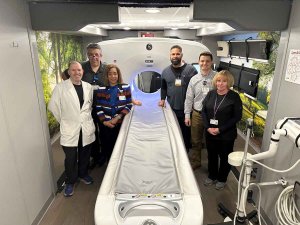SARATOGA — As the United States deals with its first cases of the deadly Ebola virus, New York State government and local hospitals are taking steps to prepare for potential infected persons.
According to the Center for Disease Control (CDC), Ebola, formerly called Ebola hemorrhagic fever, is a rare and serious infection caused by the Ebola virus.
The virus was first discovered nearly 40 years ago in the Democratic Republic of the Congo near the Ebola River. Outbreaks usually begin with a wild animal, such as a bat, infecting a person and from there it is spread via human-to-human contact.
Over the past four decades, occasional outbreaks have been recorded in Africa, but the virus was usually contained to small, rural villages. With approximately 9,200 cases and over 4,500 casualties worldwide, 2014 marks Ebola’s largest recorded outbreak. This is also the first time it has been diagnosed and transmitted in the United States.
Ebola is not airborne (like the flu) and you can’t get it from casual contact, such as merely being in the same room as someone. It can only be transmitted through close contact with an infected person’s bodily fluids (blood, sweat, vomit, etc.). If someone is exposed to infected secretions, early symptoms such as fever, headache, and severe abdominal pain may appear anywhere from two to 21 days later.
Currently, there is no vaccine or cure for an Ebola infection; treatment generally involves keeping fluid levels stable and giving the immune system time to beat the virus. According to the World Health Organization (WHO), “There are currently no licensed Ebola vaccines, but two potential candidates are undergoing evaluation.”
In an October 16 press release, Governor Andrew Cuomo announced that he has designated eight hospitals statewide to treat potential patients with Ebola. Four of those hospitals are in New York City, two are on Long Island, and the remaining two hospitals are located in Rochester and Syracuse.
The press release also states that, the “State Department of Health has issued a Commissioner’s Order to all hospitals, diagnostic and treatment centers, and ambulance services in New York State, requiring that they follow protocols for identification, isolation and medical evaluation of patients requiring care.”
Regional Department of Health staff have been tasked with visiting hospitals and clinics to inspect for preparedness including: ER triage procedures, infectious disease training, and the proper use of Personal Protective Equipment (PPE) e.g. HAZMAT suits, gloves and face masks.
Thus far, Saratoga Hospital has not received any infected patients, but nonetheless, they are taking the virus very seriously.
Ellen Kerness, the hospital’s Manager of Marketing and Communications says, “The New York State Department of Health (NYS DOH) issued guidelines last week and Saratoga Hospital intends to follow them fully.” She continues, “Like most New York hospitals, we conducted a drill a week and a half ago and did very well.”
While the hospital does not employ its own infectious disease doctor, they do have an infection control specialist (who is also a registered nurse) on staff. This specialist has instructed staff on proper protocol based on guidelines issued by the NYS DOH and the CDC. The guidelines, which were updated by the CDC on Monday, Oct. 20, focus on identifying and isolating patients in a single room with a closed door and a private bathroom, limiting the number of healthcare workers who interact with the patient, ensuring sufficient training on how to wear and properly remove PPE and disinfecting surfaces that may have come in contact with infected body fluids.
If an individual arrived at Saratoga Hospital and exhibited symptoms and risk factors, Kerness says, “There’s an isolation room in our ED [Emergency Department]; anyone with probable symptoms would be isolated and would be in contact with a very limited number of health care workers.”
The patient would not receive prolonged care here in Saratoga, rather they would likely be sent to one of the eight New York State hospitals dedicated to accept Ebola patients. Kerness noted that guidelines are constantly evolving as more about the Ebola virus is discovered.
To stay-up-to date, Kerness reassures, “We are in constant contact with CDC and State Department of Health.”
At Glens Falls Hospital, Laura Stebbins, the Emergency Preparedness and Patient Safety Director confirms, “We are following the CDC guidelines and monitoring them on a daily basis as things change. We’re also following the list of requirements provided by NYS DOH. We have a large work group that’s focused on our Ebola plan and so far we’ve done three drills in case a patient should come in.”
Glens Falls Hospital has been holding on-going PPE training as well as tabletop discussions and open forums where staff can ask Brian McDermott, the on-site Infectious Disease Doctor, any questions they might have.
Finally, Stebbins says, “We are screening all patients for travel history and symptoms, whether they come in through the main hospital or other points of entry.”
In a statement from Albany Medical Center, their PR Department confirmed that they also have a plan in place. Sue Ford, the hospital’s Senior PR Specialist says, “Albany Med is actively working with state officials, and is closely monitoring updates from CDC, to be sure we understand what is required to appropriately care for Ebola patients in ways that protect our health care workers and the public. We have drilled and continue to drill, and we have in place the precautions to handle suspected Ebola cases as developed by the CDC. If the CDC or the State Health Department make changes to their recommendations, we will adapt our plans as appropriate.”
While the Ebola virus is very serious and deserves close attention by the medical community, there’s no need for panic. The CDC website states that “it [Ebola] is not spread through casual contact; therefore, the risk of an outbreak in the U.S. is very low.”
What are the symptoms of Ebola?
• Fever
• Headache
• Muscle aches
• Fatigue
• Diarrhea
• Vomiting
• Stomach pain
• Unexplained bleeding or bruising




 How to resolve AdBlock issue?
How to resolve AdBlock issue? 

































